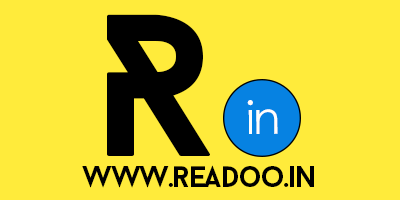Both politically & otherwise, Secularism in India is often discussed and any such discussion is incomplete without the reference to subsidies extended by the Government to the religious activities of citizens. The subsidy extended to Haj Pilgrims is one such direct subsidy. Based on a Supreme Court order in 2012, the Government of India has been steadily decreasing the amount of subsidy extended to the Haj Pilgrimage. This article was originally published by Rakesh Dubbudu on Factly.
Any discussion on secularism in India is incomplete without the reference to the direct/indirect subsidies extended by the Government to religious activities of citizens. Can a secular state take part in the religious activities of citizens and extend any direct/indirect subsidies to such religious activities? Subsidy extended to the Hajj Pilgrims is often referred to in such discussions.
The Hajj Pilgrimage
Hajj pilgrimage is organized annually during which Muslim pilgrims visit Makkah, Mina, Arafat, Muzadalifa and Madinah in Saudi Arabia. Saudi Arabia allocates quota to each country on the basis of 1 pilgrim for every thousand of the Muslim population of the country. Haj pilgrims either undertake pilgrimage through Haj Committee of India (HCOI) or Private Tour Operators (PTO).
Number of Pilgrims
During the last three years (2012 to 2014), a total of 3,46,323 Muslims have gone on Hajj pilgrimage from Hajj Committee of India (HCOI) and 95,490 through Private Tour Operators (PTOs). The total number of pilgrims was close to 1.7 lakh in 2012 and has come down to around 1.36 lakh in both 2013 and 2014. While there was a substantial fall in the number of pilgrims through PTOs in 2013, there was a similar fall in the number of pilgrims through the HCOI in 2014.

Which State sends the most Hajj Pilgrims?
The state wise breakup of Hajj Pilgrims who go through the PTOs is not available. But the state wise breakup of Hajj Pilgrims who undertake the pilgrimage through HCOI is available with the government. As expected, states with a large Muslim population send the most number of Hajj Pilgrims every year. Uttar Pradesh sends the maximum number of Hajj Pilgrims every year. In the three years from 2012 to 2014, Uttar Pradesh sent more than 89000 pilgrims, which is more than 25% of the total number from India. In fact, the top five states account for close to 58% and the top 10 states account for 83% of the total number of pilgrims from 2012 to 2014.

What kind of support does the Government Provide?
The Ministry of External Affairs (MEA) coordinates the Haj arrangements, in consultation with Hajj Committee of India (HCOI) and Consulate General of India (CGI), Jeddah. MEA also sends 546 officials on deputation every year that include Coordinators, Assistant Haj Officers, Haj Assistants, Doctors & Para-medical staff for rendering assistance to the Haj pilgrims.
The Consulate General of India, Jeddah arranges for temporary Tents in Mina, sets up Dispensaries, Branch Hajj Offices, arranges ambulances and other local transport for the Haj pilgrims with the approval of the MEA. Medicines and medical equipment are supplied by MEA to Consulate General of India, Jeddah to meet the medical requirements of Haj pilgrims. During Haj-2014, medicines worth Rs. 2.60 crores were supplied.
Ministry of Civil Aviation supervises the Air Charter operation during Haj period and deploys officials for support in Saudi Arabia to assist in embarkation and disembarkation of pilgrims.
What kind of subsidy does the Government extend?
Ministry of Civil Aviation provides subsidy for air travel to the pilgrims through the Haj Committee of India. The amount on air travel charged per pilgrim during Haj 2014 was Rs. 35,000/- whereas the actual air fare ranged from Rs. 63,750 to Rs. 1,63,350 depending on the embarkation point in India. For Haj-2015, an amount of Rs. 42,000/- will be charged as airfare from each pilgrim performing Haj through HCOI.
The subsidy amount extended was Rs.836.56 crores in 2012 to Rs. 680.03 crores in 2013. In 2014, it has further reduced to Rs. 533 crores.

The Haj pilgrims pay for the expenses incurred on air passage, accommodation, local transport within Saudi Arabia and food in Madinah etc. Haj Committee of India meets the costs of the Haj pilgrimage through the payments made by the pilgrims. No other external grant is provided by the Ministry of External Affairs to Haj Committee of India.
Why is the subsidy amount decreasing?
The Supreme Court has directed in 2012 that the subsidy on air travel should be phased out in ten years. In this judgment, the Supreme Court observed that the subsidy amount was increasing every year and it increased from 10.51 crore in 1994 to 685 crore in 2011.

The Supreme Court also directed the government to phase out the subsidy and eliminate it in 10 years quoting from the Holy Quran that only those who afford should go on the Haj Pilgrimage. The court also observed that this amount could be better utilized for the upliftment of the Muslim community.

In the same case, the court passed another order in 2013 in which the number of Hajj seats under VIP quota (Discretionary quota) to dignitaries has been restricted to 500 seats as per details below.
- Hon’ble President of India : 100 seats
- Hon’ble Vice-President of India : 75 seats
- Hon’ble Prime Minister of India : 75 seats
- Hon’ble External Affairs Minister : 50 seats
- Haj Committee of India : 200 seats.









